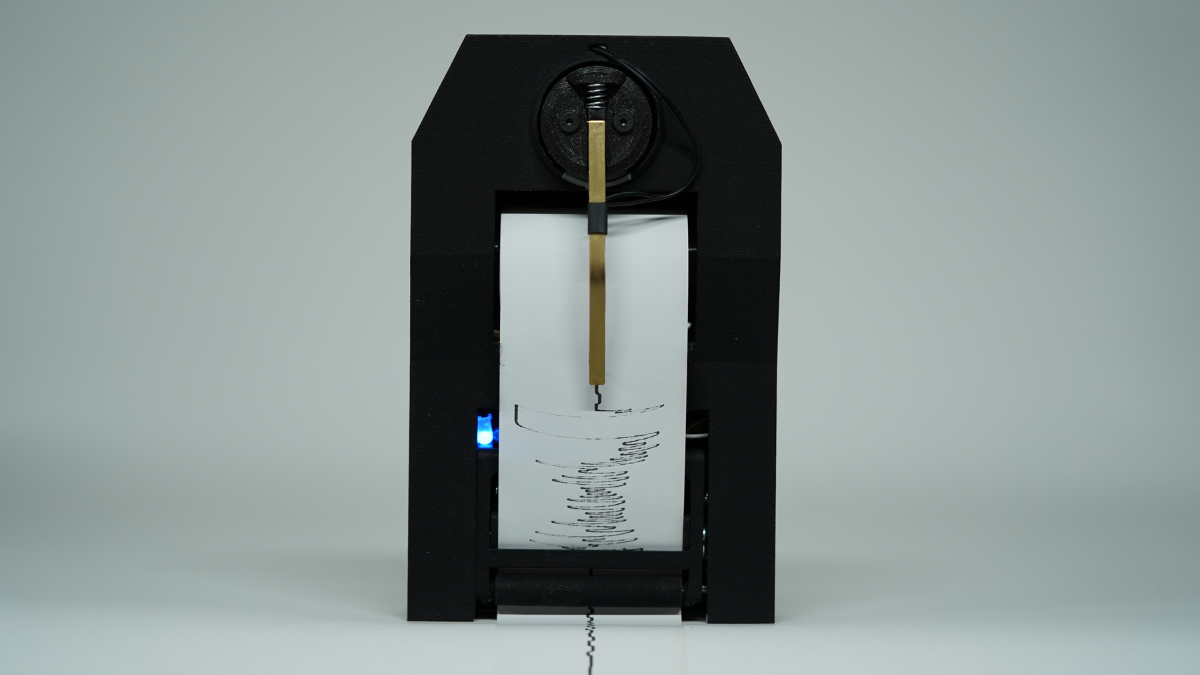From ‘doom scrolling’ to ‘digital switching’, research shows that the time we spend mindlessly flicking through online content often leads to goal conflict, guilt and can even leave us more bored than when we began.
Amplify’s innovation practice FUTURES has collaborated with Kai Lab’s Creative Technologist, Sean Malikides, to create the DoomScroller Robot. The initiative, supported by NABS (the advertising industry’s wellbeing charity) introduces a prototype that measures our online behaviour and aims to encourage more mindful scrolling.
In this interview, our Editor-at-large Natasha Randhawa, chats with Sean and Amplify Innovation Creative Director and FUTURES leader, Ed Hallam, about the impetus of their device and the importance of intentional scrolling on social media.
Ed, Sean, great to have you both here. How did this project come about?
EH: I’ve been incubating an innovation practice alongside our Head of Special Projects, Izzy Kertland, within Amplify for the past two years. We focus on bringing in creative tech experts to experiment with emerging technologies. For this project, we wanted to bring the physical and digital worlds closer together and build something to help people learn more about themselves. Within our agency roles, we’re all chronically online and the subject of doom scrolling resonated team-wide.
SM: I’ve worked with Izzy in the past, and this project came out of a FUTURES workshop with some of the Amplify creators. We all agreed on creating a physical representation of issues that only exist in the digital world. We debated something that would allow people to feel the weight of their Google Drive storage, or how much energy their searches and ChatGPT requests consume. Ultimately, we arrived at how much time we all spend on social media. As part of my role, I spend a lot of time on Instagram and have been thinking a lot about the impact of doom scrolling — not just in terms of wasting time, but how algorithms restrict what you see and therefore how you understand the world.
The DoomScroller provides users with a receipt of their mental health impact from social media. How does it quantify behaviour? What key data points shape the receipt, and what actions do you hope users will take with this information?
SM: The DoomScroller is an external detection device that clips onto your phone and tracks where your finger is. Therefore it needed to be compact and portable, which was initially a challenge. Gesture tracking measures how quickly you’re swiping and detects when you pause to read, so you can see how engaged you were with the content.
EH: This project isn’t about demonising social media. It’s an opportunity to give people greater awareness of their physical actions in a digital world. If you can see a pattern that doesn’t look healthy, you’re then equipped to ask yourself: ‘Is this content nourishing? Am I actually engaged?’
Is there potential for this technology to be adapted and scaled to influence consumer behaviour, similar to how fitness trackers have reshaped health habits?
EH: Absolutely! The main intention of the prototype is to prove our hypothesis was correct. We’re currently exploring what technology can do beyond the DoomScroller, and imagining new ways it can create unique experiences for our clients. One of our ideas includes an interactive device that translates carbon data into an audio experience, connecting sound to their carbon flying footprint. Another is around climate change, simulating people to sensorially feel different temperatures and the impact in these environments around the world.
Sean, from a creative technologist’s perspective, what was the biggest challenge in creating a tangible representation of abstract digital actions? What user experience were you hoping to elicit?
SM: Phones don’t exactly like you documenting people’s actions, so a straightforward plug-in was out of the question. The device needed to be compact and initially, it was a bit tricky finding a way to cram all the technology in. Ultimately, we hope the user experience will get the conversation going around too much time spent online. Digital companies have so much power and control; they create addictive platforms. We see this as doing our small part to counter this behaviour and create constructive conversation.
What are your hopes for the industry in shaping intentional and profitable digital spaces? Any tips for future collaborations between technologists, agencies, brands and charitable organisations?
EH: FUTURES has a longstanding relationship with NABS. It was helpful having their expertise onboard; both to discuss the effects of doom scrolling in development, and to signpost as a reputable resource for people who feel like they need support.
I’d encourage brands to think about the connective tissue between their experiences digitally and in real life. Avoid tech for tech’s sake and embrace the experimentation process. Be ready for the concept to break, but for those moments to bring you a step closer. That’s where innovation grows.
SM: In the future, it’ll be more important than ever to be intentional about your time online. I hope this means that endless, mindless scrolling will become a thing of the past. We could all do with developing a healthier relationship with technology and recognising how addictive being online really is. Perhaps one day there’ll be ‘Phone-Free January’ alongside initiatives like Dry January. I hope future collaborations will build on the work we’ve done and drive the conversation forward.
Featured image: Amplify x FUTURES





























